
-
 Winter 2025 Newsletter
Winter 2025 Newsletter -
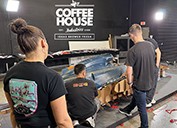 Coffee House Industries Builds the First McLaren x Allwyn "Scratch Car" in Collaboration with Designer Florian Weber
Coffee House Industries Builds the First McLaren x Allwyn "Scratch Car" in Collaboration with Designer Florian Weber -
 NEW ERA OF INDEPENDENT FILMMAKING IN ATLANTA
NEW ERA OF INDEPENDENT FILMMAKING IN ATLANTA -
 Retreat to the Mountain, Return to Yourself
Retreat to the Mountain, Return to Yourself -
 Five most common mistakes made by Producers......and how to avoid them!
Five most common mistakes made by Producers......and how to avoid them! -
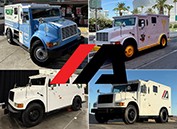 Malibu Autobahn Puts Its Armored Truck to the Test
Malibu Autobahn Puts Its Armored Truck to the Test -
 Announcing the BVA Final 2025 Auction!
Announcing the BVA Final 2025 Auction! -
 New Arrivals
New Arrivals -
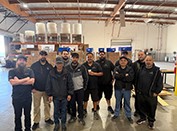 SmartSource Los Angeles Expands to New Facility
SmartSource Los Angeles Expands to New Facility -
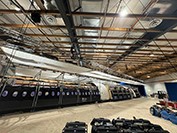 Shoot Aviation Widebody for Apple TV's PLURIBUS
Shoot Aviation Widebody for Apple TV's PLURIBUS -
 4Wall & Metro Media Productions Illuminate CNA's Global Nurses Solidarity Assembly
4Wall & Metro Media Productions Illuminate CNA's Global Nurses Solidarity Assembly -
 The Lot at Formosa Wins Corporate Innovation Award
The Lot at Formosa Wins Corporate Innovation Award -
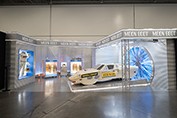 Coffee House Industries Brings MOONBOOT at ComplexCon Las Vegas
Coffee House Industries Brings MOONBOOT at ComplexCon Las Vegas -
 The Board Patrol now carries Sand & Grass Protectors
The Board Patrol now carries Sand & Grass Protectors -
 National Set Medics Celebrates 10 Years of Service!
National Set Medics Celebrates 10 Years of Service! -
 Fall Newsletter
Fall Newsletter
Production News & Events -
 In Memory of Otto Nemenz
In Memory of Otto Nemenz
(1941-2025)
A Legacy That Shaped Cinema -
 Submissions are Now Open for the Society of Camera Operators (SOC) Camera Operator of the Year Film and Television and will Open November 5th for Technical Achievement Awards
Submissions are Now Open for the Society of Camera Operators (SOC) Camera Operator of the Year Film and Television and will Open November 5th for Technical Achievement Awards -
 4Wall & GPJ Transform Domino Park for Historic Jeep Cherokee 2026 Reveal By 4Wall Entertainment
4Wall & GPJ Transform Domino Park for Historic Jeep Cherokee 2026 Reveal By 4Wall Entertainment -
 GALPIN IS PROUD TO INTRODUCE OUR
GALPIN IS PROUD TO INTRODUCE OUR
NEW Production Supply Manager
John Vargas -

-
 WonderWorks - Gateway To The Stars
WonderWorks - Gateway To The Stars -
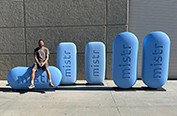 WLA3D Produces Large Scale Models for Company Launch
WLA3D Produces Large Scale Models for Company Launch -
 United Rentals Tool Solutions Powers Film & Production Communications
United Rentals Tool Solutions Powers Film & Production Communications -

-
 Coffee House Industries Helps Bring Six Flags Fright Fest to Life
Coffee House Industries Helps Bring Six Flags Fright Fest to Life -

-
 Newel Props, Film and TV Set Rentals in New York
Newel Props, Film and TV Set Rentals in New York -
 From store racks to your home screen...
From store racks to your home screen...
Iguana Vintage Clothing is LIVE on WhatNot! -

-
 Welcome to TCP Insurance: Trusted Coverage for the Creative Community
Welcome to TCP Insurance: Trusted Coverage for the Creative Community -

-
 From Sketch to Spotlight: Coffee House Industries Brings the Canelo vs. Crawford Belt Display to Life in Record Time
From Sketch to Spotlight: Coffee House Industries Brings the Canelo vs. Crawford Belt Display to Life in Record Time -
 The 25th Annual Valley Festival is Here Again
The 25th Annual Valley Festival is Here Again -
 The Lot at Formosa: A Storied Studio's Next Chapter Unfolds
The Lot at Formosa: A Storied Studio's Next Chapter Unfolds -
 2025 EMERGING CINEMATOGRAPHER AWARDS - LOS ANGELES!
2025 EMERGING CINEMATOGRAPHER AWARDS - LOS ANGELES! -
 Producers are going BIG with Reel Monster Trucks
Producers are going BIG with Reel Monster Trucks -

-

-
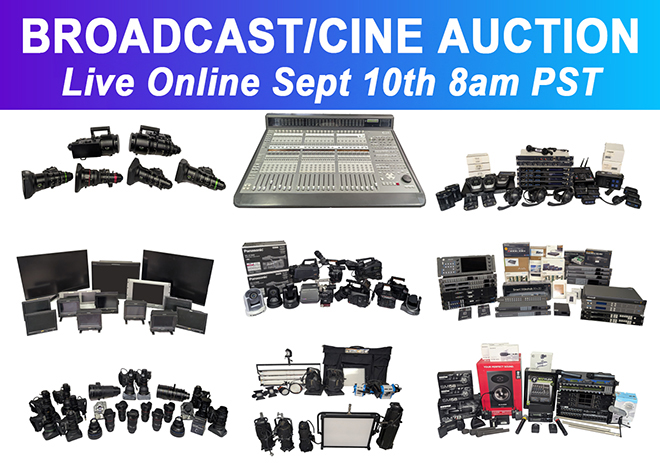
-
 California Rent A Car's Studio Division celebrates its 20th anniversary!
California Rent A Car's Studio Division celebrates its 20th anniversary! -
 Showbiz Restrooms Brings Luxury to the Film Industry
Showbiz Restrooms Brings Luxury to the Film Industry -
 FILM READY AVIATION MOCKUPS
FILM READY AVIATION MOCKUPS -
 Here we Grow Again
Here we Grow Again -
 From Blueprint to Reality: Heck Yeah Productions Unveils 5,000 Sq. Ft. Event and Recording Space
From Blueprint to Reality: Heck Yeah Productions Unveils 5,000 Sq. Ft. Event and Recording Space -
 Quixote Provides Solar Power, Shared Smarter
Quixote Provides Solar Power, Shared Smarter -
 Lights! Camera! aaaand GOLDENS at All Animal Actors International
Lights! Camera! aaaand GOLDENS at All Animal Actors International -
 Baldwin Production Services San Francisco nominated for 2025 Cola Award
Baldwin Production Services San Francisco nominated for 2025 Cola Award -
 Summer 2025 Newsletter
Summer 2025 Newsletter -
 Keep Production in LA Industry Mixer Thursday Aug 21, 2024
Keep Production in LA Industry Mixer Thursday Aug 21, 2024 -
 Creative Handbooks to be Given Out at the Upcoming Location Managers Guild International Awards
Creative Handbooks to be Given Out at the Upcoming Location Managers Guild International Awards -

-
 Cape Town, Music Curation, Shout out & Podcast Interview VAMO
Cape Town, Music Curation, Shout out & Podcast Interview VAMO -
 Get One-Stop Shopping on Fabric Printing & Borderless Framing
Get One-Stop Shopping on Fabric Printing & Borderless Framing -
 OpenAI's New Browser Could Change the Internet Forever
OpenAI's New Browser Could Change the Internet Forever -
 Malibu Autobahn Rolls Through LA with Joseline Hernandez for Zeus Network
Malibu Autobahn Rolls Through LA with Joseline Hernandez for Zeus Network -
 Studio Animal Services, LLC - Kittens Available for Production
Studio Animal Services, LLC - Kittens Available for Production -
 Wireless Teleprompter Rig Takes to the Streets of Midtown Manhattan
Wireless Teleprompter Rig Takes to the Streets of Midtown Manhattan -

-
 New Everyday Low Prices on Rigging Hardware Take a Look at 20% Lower Prices on Average
New Everyday Low Prices on Rigging Hardware Take a Look at 20% Lower Prices on Average -
 Westside Digital Mix: Venice Edition
Westside Digital Mix: Venice Edition -
 Film in Palmdale
Film in Palmdale
Scenic Locations, Valuable Incentives -
 Los Angeles Properties for
Los Angeles Properties for
Filming, Events, Activations
Pop Ups and Photo -
 Burbank Stages can now be painted any color to match
Burbank Stages can now be painted any color to match -
 Custom Prop Rentals: Bringing Your Dream Event to Life with Life-Size Magic
Custom Prop Rentals: Bringing Your Dream Event to Life with Life-Size Magic -
 New Arrivals
New Arrivals -

-
 Studio Wings moves offices, flight operations and aircraft to the Santa Fe Airport
Studio Wings moves offices, flight operations and aircraft to the Santa Fe Airport -
 WeCutFoam Specializes in Fabrication of Signs, Logos and Letters for Company Summits
WeCutFoam Specializes in Fabrication of Signs, Logos and Letters for Company Summits -
 Studio Tech Provides Wi-Fi And Internet for The Superman Movie Press Junket
Studio Tech Provides Wi-Fi And Internet for The Superman Movie Press Junket -
 Superman movie Press Junket @ Buttercup Venues
Superman movie Press Junket @ Buttercup Venues -
 Honoring Stories Worth Telling Since 2009
Honoring Stories Worth Telling Since 2009
All Ages - All Cultures - All Media -
 Xenia Lappo Joins ESTA as New Program Manager for Membership & Events
Xenia Lappo Joins ESTA as New Program Manager for Membership & Events -
 Nathan Wilson and Chris Connors discuss creating for children's television with ZEISS Supreme Prime lenses
Nathan Wilson and Chris Connors discuss creating for children's television with ZEISS Supreme Prime lenses -
 Luxury Solar Restroom Trailer Sustainability
Luxury Solar Restroom Trailer Sustainability -
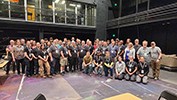 Midwest Rigging Intensive Returns with Touring Rigging Theme
Midwest Rigging Intensive Returns with Touring Rigging Theme -
 Custom Pool Floats That Steal the Show
Custom Pool Floats That Steal the Show -
 Malibu Autobahn Dresses Coachella 2025 for Shoreline Mafia
Malibu Autobahn Dresses Coachella 2025 for Shoreline Mafia -
 Thunder Studios Wins Nine 2025 Telly Awards
Thunder Studios Wins Nine 2025 Telly Awards -

-
 LCW Props Is Your One Stop Prop Shop
LCW Props Is Your One Stop Prop Shop -
 Venues in Los Angeles for Activations and Filming
Venues in Los Angeles for Activations and Filming -

-

-
 Honoring Stories Worth Telling Since 2009 - All Ages - All Cultures - All Media
Honoring Stories Worth Telling Since 2009 - All Ages - All Cultures - All Media -
 Buttercup Venues Accepting Submissions to Help Property Owners Monetize Their Spaces
Buttercup Venues Accepting Submissions to Help Property Owners Monetize Their Spaces -
 Studio Animal Services Stars in Latest Fancy Feast Commercial
Studio Animal Services Stars in Latest Fancy Feast Commercial -
 WDM celebrates Summer at the famed Michael's Santa Monica
WDM celebrates Summer at the famed Michael's Santa Monica -
 Studio Technical Services Inc.
Studio Technical Services Inc.
Spring 2025 Newsletter -
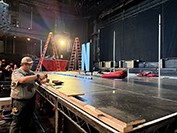 From Call to Setup: Coffee House Industries Lights Up Netflix Is a Joke at the Avalon
From Call to Setup: Coffee House Industries Lights Up Netflix Is a Joke at the Avalon -
 WLA3D produces scale model for Fox Grip
WLA3D produces scale model for Fox Grip -
 Filming Locations and Event Venues Los Angeles
Filming Locations and Event Venues Los Angeles -
 Scenic Expressions Launches a Full-Service Liquidation Solution for the Film & TV Industry
Scenic Expressions Launches a Full-Service Liquidation Solution for the Film & TV Industry -
 Producers Need Reel Monster Trucks for Reel Productions
Producers Need Reel Monster Trucks for Reel Productions -
 Meet Michael Way | Engineer
Meet Michael Way | Engineer -
 In Development: ZEISS Virtual Lens Technology Elevating VFX with physically based lens effects
In Development: ZEISS Virtual Lens Technology Elevating VFX with physically based lens effects -
 (2) PREMIER AV ACTIONS
(2) PREMIER AV ACTIONS -
 RSVP - 80 Films & Tech - Meet the Visionaries - EMMY, Telly, Peabody winners and more
RSVP - 80 Films & Tech - Meet the Visionaries - EMMY, Telly, Peabody winners and more -
 New Arrivals Are Here - Check Out LMTreasures.com
New Arrivals Are Here - Check Out LMTreasures.com -
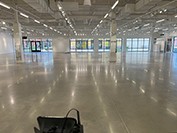 Film-Friendly Retail Space at Tejon Outlets
Film-Friendly Retail Space at Tejon Outlets -
 Behind Every Great Production, There's a Great Move
Behind Every Great Production, There's a Great Move -
 Buttercup Venues' recent work with Invisible Dynamics & Blue Revolver
Buttercup Venues' recent work with Invisible Dynamics & Blue Revolver -
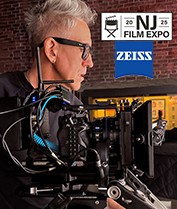 Join ZEISS Cinema at this year's NJ Film Expo on Thursday, May 1
Join ZEISS Cinema at this year's NJ Film Expo on Thursday, May 1 -
 The Location Managers Guild International (LMGI) announces that its 12th Annual LMGI Awards Show will be held on Saturday, August 23, 2025
The Location Managers Guild International (LMGI) announces that its 12th Annual LMGI Awards Show will be held on Saturday, August 23, 2025 -
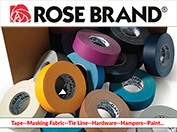 Get Your Production Supplies Now While Prices Are Stable*
Get Your Production Supplies Now While Prices Are Stable*
Rose Brand Is Your One Stop Shop -
 Immersive Sound for your next production from TrueSPL
Immersive Sound for your next production from TrueSPL -
 WeCutFoam Fabricating Large Scale Props and Decor for Companies & Products Launching Events
WeCutFoam Fabricating Large Scale Props and Decor for Companies & Products Launching Events -
 The "CA-Creates" eGroup Network
The "CA-Creates" eGroup Network -
 The Location Managers Guild International Announces the Newly Elected 2025 LMGI Board of Directors
The Location Managers Guild International Announces the Newly Elected 2025 LMGI Board of Directors -
 Production Moves: How to Find the Most Qualified Mover
Production Moves: How to Find the Most Qualified Mover -
 SAG-AFTRA Talent Payments @ Production Payroll Services
SAG-AFTRA Talent Payments @ Production Payroll Services -

-

-
 New Everyday Low Prices on Rigging Hardware
New Everyday Low Prices on Rigging Hardware
Take a Look at 20% Lower Prices on Average -
 Tejon Ranch introduces its Premium Ranch Cabins
Tejon Ranch introduces its Premium Ranch Cabins -
 Our Enchanting Garden Collection is Growing!
Our Enchanting Garden Collection is Growing! -

-

-
 Top Entertainment CEOs & Industry Titans Join Forces for Groundbreaking New Media Film Festival®
Top Entertainment CEOs & Industry Titans Join Forces for Groundbreaking New Media Film Festival® -
 Tejon Ranch opens Diner location for your next Production
Tejon Ranch opens Diner location for your next Production -
 Discover the Performance of ZEISS Otus ML
Discover the Performance of ZEISS Otus ML
Deep Dive into the Features and Technology -
 Universal Animals cast the dog in Anora!
Universal Animals cast the dog in Anora! -
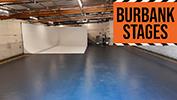 Burbank Stages is Now Open with upgraded support space
Burbank Stages is Now Open with upgraded support space -

-
 Buttercup Venues Grows Portfolio with Exciting New Locations for Filming and Events
Buttercup Venues Grows Portfolio with Exciting New Locations for Filming and Events -
 Fashion District Suite 301
Fashion District Suite 301 -
 Something new is coming for Photographers
Something new is coming for Photographers
Mark Your Calendar - February 25th -
 WLA3D completes scale model of vintage Knott's Berry Farm attraction
WLA3D completes scale model of vintage Knott's Berry Farm attraction -
 New Media Film Festival has invited you to submit your work via FilmFreeway!
New Media Film Festival has invited you to submit your work via FilmFreeway! -
 WeCutFoam Collaborated Once More with Children's Miracle Network Hospitals
WeCutFoam Collaborated Once More with Children's Miracle Network Hospitals -

-
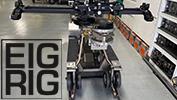 EigRig SLIDE-R1 Revolutionizes Filmmaking Production with Innovation
EigRig SLIDE-R1 Revolutionizes Filmmaking Production with Innovation -

-

-

-
 Practicals Rental Lighting Welcomes the Jucolor UV Flatbed Printer
Practicals Rental Lighting Welcomes the Jucolor UV Flatbed Printer -
 GBH Maintenance Inc. Has Grown
GBH Maintenance Inc. Has Grown -
 The Rarest Stars Shine Brightest
The Rarest Stars Shine Brightest -
 Affected by the ongoing California wildfires
Affected by the ongoing California wildfires -
 Get One-Stop Shopping...
Get One-Stop Shopping... -
 Buttercup Venues Expands
Buttercup Venues Expands -

-
 Los Angeles Office Spaces: Versatile Backdrops for Filming
Los Angeles Office Spaces: Versatile Backdrops for Filming -
 All Creatures Great and small holiday commercial for Montefiore hospital
All Creatures Great and small holiday commercial for Montefiore hospital -
 DEEP CLEANS WAREHOUSE FOR SUPER BOWL COMMERCIAL
DEEP CLEANS WAREHOUSE FOR SUPER BOWL COMMERCIAL -
 New Production Hub in Los Angeles
New Production Hub in Los Angeles -
 Carlos R. Diazmuñoz
Carlos R. Diazmuñoz -
 WeCutFoam Specializes in Decor
WeCutFoam Specializes in Decor -
 Studio Technical Services Inc.
Studio Technical Services Inc.
Fall 2024 Update -
 New Media Film Festival has invited you to submit your work
New Media Film Festival has invited you to submit your work -

-
 Available again!
Available again!
Studio 301 - 16,000 Sq. Ft. -
 Elevate Your Production with SoundPressure Labs'
Elevate Your Production with SoundPressure Labs' -
 Pro-Cam expands rental operation...
Pro-Cam expands rental operation... -
 NATIONAL ASSOCIATION OF LATINO INDEPENDENT PRODUCERS
NATIONAL ASSOCIATION OF LATINO INDEPENDENT PRODUCERS -
 New Sony A9 III Reviews
New Sony A9 III Reviews -
 New, Heavyweight, Lustrous, Shimmering 56" Elana IFR Fabric
New, Heavyweight, Lustrous, Shimmering 56" Elana IFR Fabric -
 JOIN US IN ORLANDO THIS NOVEMBER!
JOIN US IN ORLANDO THIS NOVEMBER! -
 BLUE MOON CLEANING
BLUE MOON CLEANING
RESTORES MUSIC-MAKING -
 Another Collaboration Between WeCutFoam and Event Planner
Another Collaboration Between WeCutFoam and Event Planner -
 BLUE MOON CONGRATULATES 2024 COLA FINALISTS
BLUE MOON CONGRATULATES 2024 COLA FINALISTS -
 Fall Production News & Events
Fall Production News & Events -
 Not just green, but mighty Verde
Not just green, but mighty Verde -
 Introducing...
Introducing...
Restaurant/Bar/Venue in Encino -

-
 ESTA and Earl Girls, Inc. Launch $100,000 TSP Fundraising Challenge
ESTA and Earl Girls, Inc. Launch $100,000 TSP Fundraising Challenge -
 There's still time to register for ESTA's Plugfest
There's still time to register for ESTA's Plugfest -

-
 BLUE MOON CLEANING SEES SPIKE IN MAJOR LA FEATURE FILMING
BLUE MOON CLEANING SEES SPIKE IN MAJOR LA FEATURE FILMING -

Amoeba Records on Sunset
&
SuperMarket in K-Town -
 "Alice in Wonderland" tea party brought to life...
"Alice in Wonderland" tea party brought to life... -
 Filming With Production Ready Aviation Equipment
Filming With Production Ready Aviation Equipment -

-

-
 A5 Events - Take Your Event to The Next Level
A5 Events - Take Your Event to The Next Level -
 The Original Amoeba Records Venue
The Original Amoeba Records Venue
& The SuperMarket -
 Doc Filmmaker Jennifer Cox
Doc Filmmaker Jennifer Cox -
 Red, White or Blue Rental Drapes
Red, White or Blue Rental Drapes -
 Introducing Tuck Track Invisible Framing for Fabric Prints
Introducing Tuck Track Invisible Framing for Fabric Prints -

-
 American Movie Company's LED Wall Studio Sale
American Movie Company's LED Wall Studio Sale -
 Black 360 Independence Studio
Black 360 Independence Studio -
 Nominations are open for the 2025 ESTA Board of Directors!
Nominations are open for the 2025 ESTA Board of Directors! -
 Custom Prop Rentals is moving to a new, larger location!
Custom Prop Rentals is moving to a new, larger location! -
 Pro-Cam opens Las Vegas branch, expanding rental operation
Pro-Cam opens Las Vegas branch, expanding rental operation -
 New ShowLED Starlight Drops
New ShowLED Starlight Drops -
 Costume House Sidewalk Sale
Costume House Sidewalk Sale -
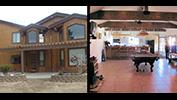 Working Wildlife's newly renovated 60 acre ranch available for Filming
Working Wildlife's newly renovated 60 acre ranch available for Filming -
 Location Manager Bill Bowling
Location Manager Bill Bowling
to Receive the Trailblazer Award -

-
 Mr. Location Scout is in Lake Tahoe
Mr. Location Scout is in Lake Tahoe -
 DreamMore Resort Fountain
DreamMore Resort Fountain -
 Valley Film Festival
Valley Film Festival
Greetings from the (818): -
 2024 Changemaker Awards and Artist Development Showcase
2024 Changemaker Awards and Artist Development Showcase -
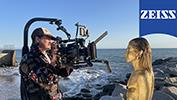 ZEISS Conversations with Jack Schurman
ZEISS Conversations with Jack Schurman -
 Collaboration Between WeCutFoam and Yaamava Resort & Casino
Collaboration Between WeCutFoam and Yaamava Resort & Casino -
 Location Managers Guild International Awards
Location Managers Guild International Awards -
 Molding Cloth
Molding Cloth
Make Fabulous Textured Designs -
 WeCutFoam Specializes in Large Events
WeCutFoam Specializes in Large Events -
 Introducing Truck Track Invisible Framing for Fabric Prints
Introducing Truck Track Invisible Framing for Fabric Prints -
 GBH Maintenance is back at Herzog Wine Cellars
GBH Maintenance is back at Herzog Wine Cellars -
 SATE NORTH AMERICA 2024
SATE NORTH AMERICA 2024 -
 Production News & Events Summer Edition
Production News & Events Summer Edition -
 Four Amazing Architectural Locations!
Four Amazing Architectural Locations! -
 * BIG SAVINGS * ON BIG STUDIOS
* BIG SAVINGS * ON BIG STUDIOS -
 Let Your Brand Stand Tall!
Let Your Brand Stand Tall! -
 Sue Quinn to Receive Lifetime Achievement Award
Sue Quinn to Receive Lifetime Achievement Award -
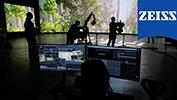 ZEISS Cinema at Filmscape Chicago
ZEISS Cinema at Filmscape Chicago -
 GBH Maintenance Is the Standard for Commercial Maintenance
GBH Maintenance Is the Standard for Commercial Maintenance -
 Come Join Us at Cine Gear Expo 2024
Come Join Us at Cine Gear Expo 2024 -
 Available now:
Available now:
6th Street Gallery & Venue -
 Thunder Studios Triumphs with Five Telly Awards
Thunder Studios Triumphs with Five Telly Awards -
 Reddit Went Public IPO - WeCutFoam Was There With Decor
Reddit Went Public IPO - WeCutFoam Was There With Decor -
 AirDD's Hottest New Product
AirDD's Hottest New Product
for 2024 Events -
 GBH Maintenance Sets the Standard for Window Cleaning
GBH Maintenance Sets the Standard for Window Cleaning -
 Haigwood Studios collaboration with the UGA Dodd School of Art
Haigwood Studios collaboration with the UGA Dodd School of Art -

-
 RX GOES TO 11!
RX GOES TO 11!
with Mike Rozett -
 Don't Be A Square - Think Outside The Box!!
Don't Be A Square - Think Outside The Box!! -
 WeCutFoam Fabricates Realistic Lifesize Props
WeCutFoam Fabricates Realistic Lifesize Props -

-
 Exposition Park Stage/Venue
Exposition Park Stage/Venue -
 Production Update From UpState California Film Commission
Production Update From UpState California Film Commission -
 Base Camp With All The Extras
Base Camp With All The Extras -
 LAPPG AT THE ZEISS CINEMA SHOWROOM
LAPPG AT THE ZEISS CINEMA SHOWROOM -
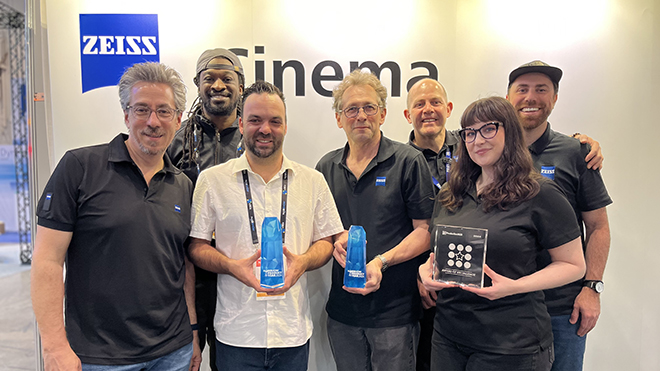 ZEISS Nano Primes and ZEISS CinCraft Scenario Received NAB Show 2024
ZEISS Nano Primes and ZEISS CinCraft Scenario Received NAB Show 2024 -
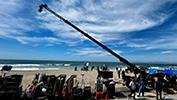 Cranium Camera Cranes Introduces the all new Tankno Crane!
Cranium Camera Cranes Introduces the all new Tankno Crane! -
 Come Join Us at Cine Gear Expo 2024
Come Join Us at Cine Gear Expo 2024 -
 FAA Drill Burbank Airport
FAA Drill Burbank Airport
(federal aviation administration) -
 Exclusive Stahl Substitute Listing from Toni Maier-On Location, Inc.
Exclusive Stahl Substitute Listing from Toni Maier-On Location, Inc. -
 GBH Maintenance: Elevating Janitorial Standards Across Los Angeles
GBH Maintenance: Elevating Janitorial Standards Across Los Angeles -
 LOCATION CONNECTION has the best RANCHES FOR FILMING!
LOCATION CONNECTION has the best RANCHES FOR FILMING! -
 Hollywood Studio Gallery has Moved
Hollywood Studio Gallery has Moved -
 AirDD's inflatable "Kraken" designs transformed Masked Singers
AirDD's inflatable "Kraken" designs transformed Masked Singers -
 GBH maintenance Provided a Hollywood Shine for Herzog Wine Cellars
GBH maintenance Provided a Hollywood Shine for Herzog Wine Cellars -
 Production News & Events
Production News & Events
Spring Newsletter -
 Immersive Venue/ Black Box/ Stage
Immersive Venue/ Black Box/ Stage
2024 DTLA Arts District -

-
 Exclusive Malibu Listing from Toni Maier - On Location, Inc.
Exclusive Malibu Listing from Toni Maier - On Location, Inc. -
 Empowered Collaborates with Harlequin Floors
Empowered Collaborates with Harlequin Floors -
 Movie Premiere, TCL Chinese Theater
Movie Premiere, TCL Chinese Theater -
 Studio Tech provides services for the Grammy House
Studio Tech provides services for the Grammy House -
 Sora AI Text To Video
Sora AI Text To Video -
 New Apex Photo Studios
New Apex Photo Studios
Website: Rent Smarter, Create More & earn rewards! -

-
 How Ideal Sets Founder Harry Hou Cracked the Code on Affordable Standing Sets
How Ideal Sets Founder Harry Hou Cracked the Code on Affordable Standing Sets -
 New Storage & Co-Working Spaces In Boyle Heights near Studios
New Storage & Co-Working Spaces In Boyle Heights near Studios
For Short or long term rental -
 Auroris X Lands at A Very Good Space
Auroris X Lands at A Very Good Space -
 GBH Maintenance Completes Work on 33000ft Production Space
GBH Maintenance Completes Work on 33000ft Production Space -
 MUSICIAN ZIGGY MARLEY IS ANOTHER HAPPY.CUSTOMER OF MAILBOX TOLUCA LAKE'S 'DR. VOICE'
MUSICIAN ZIGGY MARLEY IS ANOTHER HAPPY.CUSTOMER OF MAILBOX TOLUCA LAKE'S 'DR. VOICE' -
 Custom Digitally Printed Commencement Banners & Backdrops
Custom Digitally Printed Commencement Banners & Backdrops -
 Rose Brand, SGM, Bill Sapsis, Sapsis Rigging, and Harlequin Floors Sponsor NATEAC Events
Rose Brand, SGM, Bill Sapsis, Sapsis Rigging, and Harlequin Floors Sponsor NATEAC Events -
 Kitty Halftime Show air for Animal Planet's Puppy Bowl
Kitty Halftime Show air for Animal Planet's Puppy Bowl -
 Georgia Animal Actors Persents Merlin
Georgia Animal Actors Persents Merlin -
 ESTA Launches Revamped NATEAC Website
ESTA Launches Revamped NATEAC Website -
 Mollie's Locations
Mollie's Locations -
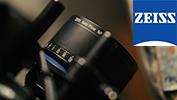 ZEISS Cinema News for February
ZEISS Cinema News for February -

-
 Seamless Fabric Backdrops up to 140ft x 16ft, Printed Floors...
Seamless Fabric Backdrops up to 140ft x 16ft, Printed Floors... -
 Check out all the Pioneer Gear at Astro!
Check out all the Pioneer Gear at Astro! -
 Production News & Events
Production News & Events -
 All of Your Production Supplies Gathered in Just One Place
All of Your Production Supplies Gathered in Just One Place -
 Meet the RED V-Raptor [X]
Meet the RED V-Raptor [X] -
 Sit Back and Enjoy Some Laughs
Sit Back and Enjoy Some Laughs -
 Mr. Location Scout Scouted and Managed Locations
Mr. Location Scout Scouted and Managed Locations -
 Introducing...
Introducing...
Landmark Restaurant in Encino -
 The White Owl Studio is celebrating all that is new!
The White Owl Studio is celebrating all that is new! -

-
 Last Call for NATEAC 2024 Proposals
Last Call for NATEAC 2024 Proposals -
 NOMINATIONS ANNOUNCED FOR THE
NOMINATIONS ANNOUNCED FOR THE
2024 MUAHS -
 Voted Best New Stage Rigging Products at LDI 2023
Voted Best New Stage Rigging Products at LDI 2023 -
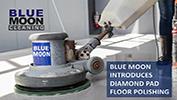 NEED MORE SPARKLE IN THE FLOOR?
NEED MORE SPARKLE IN THE FLOOR? -
 David Panfili to Appoint Michael Paul as President of Location Sound Corp.
David Panfili to Appoint Michael Paul as President of Location Sound Corp.
industry news
The Latest Industry News for the Exciting World of Production.
Creative Handbook puts together a bi-monthly newsletter featuring
up-to-date information on events, news and industry changes.
Add My Email
Glidecam X-22 Review
By: Glidecam | April 2, 2014
Email This Article |  |
| 

An addiction to movement
My name is Simon Wyndham, and I'm addicted to camera movement. There, you have my confession. A number of years ago when I moved up from DV cameras to working with full sized 2/3" jobs there was one element missing from my arsenal of imaging capabilities. Movement.
Unfortunately, while a nice big shoulder mount camera looks great and impresses clients, the accompanying Steadicam® or stabiliser unit becomes correspondingly more expensive than it does for the smaller cameras. An order of magnitude so.
Certainly I used dollies of various types, along with jibs and cranes, but while those types of devices have their place not one single one of them comes even remotely close to the versatility and production value enhancing nature of a Steadicam®.
My schizophrenic purchasing decision process
I have been procrastinating over the decision about purchasing a camera stabiliser for some time now. I eventually came to the conclusion that purchasing a full sized rig which could take anything that could be thrown at it (within reason) would be pointless. Such a rig would require an entirely new business plan and career path, and would be based upon a skill I simply don't have. Yet.

Renting a large rig is always an option, but the trouble with that is that as a new operator there is nothing to practise with, and as a newbie you really do need to practice. All the time. Instead I decided to purchase a smaller, affordable rig that could still take a full size camera when required. Then, if I practiced hard enough and gained enough skill then perhaps I could rent a beefier setup when required and perhaps even purchase one.
Originally I wanted to go for a Steadicam® Flyer LE. It had the Steadicam brand name - more important than you might think in the fickle world of production - and the arm was legendary. It is also known to be able to take a fair bit more weight than the official figures suggest. Steadicam® are a bit like the Apple of the stabiliser world. They are wonderful pieces of engineering.
The main competitor that figured into in my decision making was Glidecam. Now Glidecam has been around for a good while now and their Gold system is very well respected. Unfortunately their older lower priced rigs were far from ideal. They went a long way to rectifying this with the V-25, which is now discontinued, although it can be bought in updated form with the new X-45 arm. The V-25 also has a very good reputation and can carry around 30lbs of payload.
The latest addition to the Glidecam lineup is the X-22, a rig that builds on the success of the V-25. The X-22 offers a brand new arm and sled, although it carries a few Pounds less in weight. This appears to be a limitation of the sled rather than the arm, since the latter is rated at 36lbs capacity.
So why didn't I go with the Flyer LE given Tiffens great reputation? The first reason was price. I was made an offer that I couldn't refuse. Further I had a few jobs that required such a device fairly quickly. I was also convinced, given various murmuring, that an update to the Flyer would surface at this years NAB exhibition. I wasn't prepared to put down the money for a Flyer only for them to release an all singing and dancing fully adjustable bottom stage version not long afterwards.
Of course equipment will always be updated, but the current Flyer system doesn't offer many options for achieving dynamic balance. The Glidecam X-22 on the other hand allows forward and aft adjustment of both the monitor and batteries, so it would be easier to achieve dynamic balance with.
Additionally the X-22 can carry, officially, 6lbs more in weight than the LE. That's one and a half PMW-350 bodies to you and me. Quite a bit of extra leeway if extra accessories need to be mounted.
Weight capacity alone shouldn't be the deciding factor when purchasing a rig, but on balance (pardon the pun) the X-22 seemed like the better option for me to go for at this particular point in time.
Build quality and setup
What struck me when I first set eyes on the X-22 at the initial demo that was set up for me at CVP Mitcorp was the build quality. Everything is nicely machined, and is clearly very robust. The camera dovetail plate is beautifully anodised in red, and the no tools trim adjustment allows smooth adjustments of the top stage. It is all a far cry from the rather crude set up of previous Glidecams such as the V-16.
The gimbal has a really nice knurled grip, and the gimbal itself is, from what I can tell, totally friction free with absolutely zero play. An engineer I was with on my first shoot with the rig commented in disbelief at how smooth it was.
The gimbal arm handle is padded, which is a nice aesthetic touch, although makes it a bit more of a pain to securely attach accessories such as zoom controls to.
The post is a two stage telescopic construction, which is standard for this price of rig. Helpfully Glidecam have provided accurate numbered markings so that it is easy to note down extension settings for various setups. There is also a guide line to ensure that the bottom stage is always perfectly aligned with the top.
Assembly of the sled was a straightforward affair. If I had one gripe about the sled in general it would be that Glidecam only provide a single BNC video cable through the post. It would have been nicer to have had a power cable too. This is something I will need to add myself.
The provided 700nit monitor is fairly basic. It is standard definition, but will accept an HD signal via SDI and doesn't have frameline capability. The single screw mount for the monitor is a weak spot, especially with a battery mount attached to the back of the monitor, and I will be modifying this with a central pivoting bracket. This mod will also allow the viewing angle to be changed without affecting the rigs balance. Lets face it, I don't really know of any stabiliser owner who hasn't modified their rig in some way or another. It is all par for the course.
Overall the build quality of the sled is exceptional, and should last for a good many years with proper care.
The X-22 arm
The arm is the heart of the system. A great sled is no good without an arm that can do the business. As I mentioned earlier the X-22 arm is rated to be able to carry 36lbs of weight. That's quite a bit of heft, and gives the X-22 some rather interesting mod/extension possibilities for budding home builders.
The arm on the X-22 is a dual section construction, and consists of two titanium springs in each, with a separate tension adjustment for each one. This adjustment is made by using allen screws situated at the ends of each of the sprung sections. This is one of the differences between the X-22 and the Steadicam® Flyer. On the Flyer these adjustments are made using a single tools free knob, and can be made while the camera is being flown.
I should note that Steadicam® operators have for years had to use the allen screw method on arms such as the 3A. It does make set up time slightly slower because you have to dismount the rig and detach the arm before testing to see if the tension is correct. If you have to make several adjustments it does become slightly irritating. But as one becomes used to the arm and the way that it behaves it becomes easier to gauge at which tension point the springs should be placed for any given setup.
Because the arm section that is connected to the vest has to take both the weight of the sled and the gimbal arm section, the tension needs to be higher here. I found that the vest arm section needed to be set to around one mark higher in tension than the gimbal section.
The arm action is very smooth, and doesn't require much force to boom up and down. Operationally the arm movement is pretty much silent. Quite often inexpensive arms can be noisy, but not the X-22. It's as smooth as butter.
Setup and balancing
Setting up and balancing the rig is fairly straightforward. As I mentioned previously the fact that both the monitor and battery section can be adjusted fore and aft means that there are a lot of options for dynamic balance adjustment.
This proved crucial when I was adjusting for an EX3. The EX3 is a bit of an odd design, and I found that I had to have the monitor section moved much further forward than the batteries in order to achieve dynamic balance. My PDW-510 was much easier to adjust for.
With regard to the act of actually adjusting the sled, the tools free adjustment of the gimbal placement along the arm, and the lower telescopic section made some adjustments easy. Likewise the worm screw based trim adjustment on the top stage (where the camera attaches to the sled) were also easy to make, and allowed for very fine adjustments.
Where the X-22 falls down slightly is on the lower section. The monitor and battery plate sections are easy to adjust, but can be slightly cumbersome and difficult to make fine adjustments with. I would much prefer the monitor and battery to be mounted on rod based brackets.
The design of the rig is such that this is a modification that I may well make in addition to adding a J and D box for better connectivity. The X-22 is a budget rig however, so I would be foolish to expect all these features as standard. One of the things I like about the X-22 is that such modifications are made easy because the various screw points are all conveniently placed and solid enough for such things to be done. Lets face it, who doesn't modify their rig?
When setting it up for dynamic balance - ensuring that the camera can freely spin 360 degrees without tilting in any direction - I did find that the docking bracket did not allow enough distance from the stand to allow a full spin when the monitor section was moved forward. I could get a pretty good idea of dynamic balance, but needed to wear the rig in order to spin it fully.
The vest
The X-22 vest is a fairly simple affair but it is very well constructed, and for my body type (slim) perfectly comfortable. I could perhaps do with slightly more adjustment on the shoulders, but once broken in and with the weight of the rig loaded onto it it performed very well.

Like most budget vests the X-22 uses buckles and pull through strapping to adjust tightness. This means that putting on the vest when tightened properly can require some muscle, especially on the lower back connector. This is in contrast to the direction that pricier models are now taking with ratchets and sprung loaded clips. With those you can put on the vest and attach the connectors, and use the sprung loaded clip to 'snap' the vest back to the proper tightness.
Once again this type of mod can be made, and many have done such a thing to other makes of vest. This isn't Glidecam specific. It is a budget vest, what do I expect?
It is important to make sure that the vest is properly aligned. When I first started using it I felt fatigued in my lower back muscle as I expected, not being used to the weight of the rig. It takes time to build up endurance. However after a while of use I looked down at the vest and noticed that it wasn't quite aligned straight with the chest plate directly on my centre.
Once I corrected this I could fly the X-22 for extended periods with a lighter camera such as the EX3 without feeling anything in 'that' muscle. Nice. A clear demonstration that, when properly adjusted, the X-22 vest is doing exactly what it should.
Flying the rig
Now before I start commenting on what the X-22 feels like to fly I feel that I must reiterate that I am only just starting out in this field. I have however used, albeit very briefly, the entire Steadicam® range all the way up to the Ultra 2, as well as other makes. So I am able to compare the feel of the X-22 somewhat with those rigs.
One of the first tests I did with the X-22 was to try out the booming action of the arm. As per recommendations on various forums I set the tension so that it hung very slightly downwards in neutral position (no force with the arm hand). Apparently most 3A style arms perform better this way.
Booming was easy and smooth. There was no judder or friction as the arm reached its extremities. The force needed to move the arm up and down was fairly light, although at the extreme ends of movement more force was needed, but still fairly light compared to the weight on the sled!
As I mentioned previously the arm is silent in movement. With the latest version of the arm (see notes at the end of this article) there is minimal flapping around when moving at high paces. This is a trait that bugs a lot of budget arms, so it is good to see that Glidecam have this under control.
Movement away from and towards the body was also very smooth with absolutely no play or friction apparent in the bearings in the arm connecting sections.
The gimbal on the sled was similarly smooth. By setting the camera into a free spin it would keep on going, even at slow speeds, until I stopped it. I haven't noticed any play, stiction, or friction at all.
In the ideal position in relation to the body, assuming the operator is walking forward, the monitor can often be obscured by the gimbal handle, especially with a heavier camera where the post may be extended to certain positions. For this reason I believe it to be important to have the monitor on a bracket that can be slid further up the post when required.
This is a minor niggle and it is absolutely by no means specific to the X-22. But as a general observation I think that a height adjustable monitor bracket may well be essential, especially when trying to keep good skeletal form while operating, especially as a newcomer when it is tempting to hunch the head forward to see it.
The gimbal bearings are sealed at the top, but not the bottom, so if you are in a dusty environment it would be advisable to purchase a cover of some kind. This also goes for the arm too, but this is the case for any type of video equipment if you wish it to last!
Conclusion
A lot of people will want to see the sort of footage that can be shot with the Glidecam X-22. However I will not oblige (you think I'm going to post up my wobbly efforts?!) You simply cannot tell a thing about how good a stabiliser is by watching somebody's footage. A rubbish operator will make even a Pro GPI rig look bad, while an exceptional operator such as Charles Papert or the late, great Ted Churchill could take a brick with a camera mounted on it and make it look good!
Using a camera stabilisation device takes dedication and practice in equal measure. Not only that but it takes correct practice. We have a saying in martial arts, "practice makes permanent". That is to say incorrect practice will lead to bad pictures, and to habits that will be very hard to unlearn.
Before planning to purchase a rig of any make, especially body mounted rigs, go on a course of some kind that is run by experienced operators. You will get to try out different rigs, and you will also find out if operating such a thing is for you. Some people are naturals, while others discover that they never want to wear one again as long as they live!
Expect it to take a year of constant, daily practice before you are remotely competent. Yes, really, that long! When you purchase and dedicate yourself to a rig you are not only investing in your gear, but also your skill. You need to take it seriously.
Okay, so I have gone off on a tangent, but I felt it important that I mentioned all of that before I gave you my conclusion on the X-22.
As a budget rig the X-22 is a fantastic piece of equipment. It lacks some of the bells and whistles of its main competitor, the Steadicam® Flyer LE, such as the tools free lift adjustment, but as I mentioned it is you who is the most important part of the equation.
The X-22 is exceptionally well built and robust, it looks fantastic, and it can carry more weight than the Flyer. At 25lbs capacity there is playing room there for a Red with a couple of accessories on it. You don't have to strip it down quite as much as you might have to with the Flyer.
Notes
When I first purchased the X-22 the arm initially had a slight problem in that it was far too springy. The arm tended to move far too much, and after halting a movement it kept bobbing up and down a bit. This resonated into the image slightly. A better operator than I would be able to compensate, but I am not yet at that level. The arm also tended to flap around a lot during fast walking and running.
Apparently on the first batch of arms this was the case, and it appears that I had an early one. I was told that Glidecam have now modified and tuned this out of the newer batches. So my arm went back to Glidecam for the mod to be performed free of charge. My hat goes off to David Stevens at Glidecam for dealing with my enquiry about this matter on a Sunday after he had just had a very long trip back from Amsterdam! I can't fault Glidecams service or dedication to their customers at all!
The mod involved replacing the bushes at the spring pivot points. When I first received the arm back I was a little disappointed because I could hear a lot of noise in the springs. David Stevens at Glidecam helpfully suggested that I adjust the arm sections to full tension and boom it up and down to its limits a few times. This did the trick and the springs became seated nicely.
I could also feel some friction in the arm, so I lubricated the spring pivots with teflon based lubricant. This seemed to work somewhat, although I could still hear and feel a lot of resonance that "sang" through the springs at slow boom speeds. I was told that this was most likely due to the new bushings breaking in.
However I am rather impatient so I took the advice from a few other operators to get hold of some ACF-50, a different kind of lubricant that is often used on motorcycles. This stuff has the added benefit that it protects all metal surfaces from corrosion. Quite an issue apparently as sweat lands on the steel parts of these types of devices. So I received my order of ACF-50 and gave the arm a good spray, and as advised by one operator tried to get it where there was any possibility of something rubbing, such as on the spring plugs where the springs can sometimes resonate.
At first there wasn't much effect, but I took the rig out for a long practise session, and low and behold at the end of it most of the noise was gone. There was ever such a slight trace left, but not enough to be bothersome. So now my X-22 arm is as smooth as butter again.
That is not all however, with the arm now up to the latest specification the springiness is gone and it is now possible to move very quickly with the rig, even running, without the arm flapping around. As far as I am concerned the arm now performs every bit as well as any competitor in the market.
For those purchasing new rigs, your X-22 arms should be the latest specification. However if you can I would try the rig out at your dealer, or get an assurance that they will replace it at no charge if you happen to receive an earlier version. How will you know what arm you have? Simple. Set up the rig, put it on, and make some large jiggling moves. You'll look really silly, but if after a few large pelvic thrusts (!) the arm keeps moving a few solid bounces after you have stopped you will know that you have an early arm. Alternatively, as long as you can do it safely, try a short run to see how much the arm flaps around. If it moves a lot you have an early arm.
As I mentioned, most new purchasers shouldn't have this problem, but be aware none the less.
About Glidecam
Glidecam Industries, the manufacturer of camera stabilization systems and accessories, for use by both film and video makers, was founded by Martin Stevens in 1992. The actual origin of the first Glidecam device dates back to the Spring of 1991. Martin designed it when he was producing and directing his first feature length motion picture. Martin had become displeased with the current state of the art of camera stabilization systems and particularly the very high prices of these systems. He reasoned that if he could build a more affordable and capable camera stabilizer for his own production needs, using what he now refers to as "a common sense approach", then perhaps others would find need of the same. And so the "Glidecam" was born in 1991.
It was in 1993 that Martin Stevens, seeking a professional business partner, sought to join forces with his brother David Stevens. David's many years of experience and success working in both the financial and sales world made him the ideal partner. It was David's business model and its practical application that lead Glidecam Industries to become so successful that it became incorporated in 1997, with Martin as President and David as Vice President, and now with David as CEO.
Glidecam Industries, Inc. now has over 20 products and hundreds of dealers worldwide. Glidecam separates itself from its competition by offering a product line that is both technologically advanced and yet priced very affordably. Glidecam's customer service policy of thoroughly helping its customers both before and after a sale has won them a very happy customer and customer referral base.
Glidecam Industries, Inc. has billed itself as "The Name and Future of Camera Stabilization", and it is in this light that they introduced the worlds first body mounted, camera stabilization system for cameras weighing up to 10 pounds. This was the Glidecam V-8 introduced in 1997, with its exclusive and unique "Orbit Hinge" technology and compact "Dyna-Elastic Arm" design. It is also in this light that Glidecam introduced its "Gold Series" in 1999. The Glidecam Gold Series offers the very high end customer a top of the line body mounted stabilizer for cameras weighing from 13 to 38 pounds. The Gold Series again combines Glidecam's high technology with common sense ideology approach, creating a product that is sophisticated, highly aesthetic and far more affordable than the competition's high end equipment.
Glidecam has become the world leader in its field because it combines the best practices with the best thinking, and in the end it is this combination that the customer wants.
Glidecam Industries Inc. offers a wide variety of camera stabilizers (camera stabilization systems) for use with motion picture cameras, video cameras, and video camcorders. These hand-held and body-mounted camera stabilizers create super smooth shots, and allow the operator to walk, run, go up and down stairs, shoot from moving vehicles, and travel over uneven terrain without any camera instability or shake. Glidecam camera stabilization products make ideal camera accessories and can easily replace or be used in conjunction with dollies and tracks, booms, camera cranes, and tripods, or monopods. Both professional filmmakers and amateur movie makers alike can enjoy the fluidity and grace that Glidecam camera stabilizers provide.
For more info please visit: www.glidecam.com
My name is Simon Wyndham, and I'm addicted to camera movement. There, you have my confession. A number of years ago when I moved up from DV cameras to working with full sized 2/3" jobs there was one element missing from my arsenal of imaging capabilities. Movement.
Unfortunately, while a nice big shoulder mount camera looks great and impresses clients, the accompanying Steadicam® or stabiliser unit becomes correspondingly more expensive than it does for the smaller cameras. An order of magnitude so.
Certainly I used dollies of various types, along with jibs and cranes, but while those types of devices have their place not one single one of them comes even remotely close to the versatility and production value enhancing nature of a Steadicam®.
My schizophrenic purchasing decision process
I have been procrastinating over the decision about purchasing a camera stabiliser for some time now. I eventually came to the conclusion that purchasing a full sized rig which could take anything that could be thrown at it (within reason) would be pointless. Such a rig would require an entirely new business plan and career path, and would be based upon a skill I simply don't have. Yet.

Renting a large rig is always an option, but the trouble with that is that as a new operator there is nothing to practise with, and as a newbie you really do need to practice. All the time. Instead I decided to purchase a smaller, affordable rig that could still take a full size camera when required. Then, if I practiced hard enough and gained enough skill then perhaps I could rent a beefier setup when required and perhaps even purchase one.
Originally I wanted to go for a Steadicam® Flyer LE. It had the Steadicam brand name - more important than you might think in the fickle world of production - and the arm was legendary. It is also known to be able to take a fair bit more weight than the official figures suggest. Steadicam® are a bit like the Apple of the stabiliser world. They are wonderful pieces of engineering.
The main competitor that figured into in my decision making was Glidecam. Now Glidecam has been around for a good while now and their Gold system is very well respected. Unfortunately their older lower priced rigs were far from ideal. They went a long way to rectifying this with the V-25, which is now discontinued, although it can be bought in updated form with the new X-45 arm. The V-25 also has a very good reputation and can carry around 30lbs of payload.
The latest addition to the Glidecam lineup is the X-22, a rig that builds on the success of the V-25. The X-22 offers a brand new arm and sled, although it carries a few Pounds less in weight. This appears to be a limitation of the sled rather than the arm, since the latter is rated at 36lbs capacity.
So why didn't I go with the Flyer LE given Tiffens great reputation? The first reason was price. I was made an offer that I couldn't refuse. Further I had a few jobs that required such a device fairly quickly. I was also convinced, given various murmuring, that an update to the Flyer would surface at this years NAB exhibition. I wasn't prepared to put down the money for a Flyer only for them to release an all singing and dancing fully adjustable bottom stage version not long afterwards.
Of course equipment will always be updated, but the current Flyer system doesn't offer many options for achieving dynamic balance. The Glidecam X-22 on the other hand allows forward and aft adjustment of both the monitor and batteries, so it would be easier to achieve dynamic balance with.
Additionally the X-22 can carry, officially, 6lbs more in weight than the LE. That's one and a half PMW-350 bodies to you and me. Quite a bit of extra leeway if extra accessories need to be mounted.
Weight capacity alone shouldn't be the deciding factor when purchasing a rig, but on balance (pardon the pun) the X-22 seemed like the better option for me to go for at this particular point in time.
Build quality and setup
What struck me when I first set eyes on the X-22 at the initial demo that was set up for me at CVP Mitcorp was the build quality. Everything is nicely machined, and is clearly very robust. The camera dovetail plate is beautifully anodised in red, and the no tools trim adjustment allows smooth adjustments of the top stage. It is all a far cry from the rather crude set up of previous Glidecams such as the V-16.
The gimbal has a really nice knurled grip, and the gimbal itself is, from what I can tell, totally friction free with absolutely zero play. An engineer I was with on my first shoot with the rig commented in disbelief at how smooth it was.
The gimbal arm handle is padded, which is a nice aesthetic touch, although makes it a bit more of a pain to securely attach accessories such as zoom controls to.
The post is a two stage telescopic construction, which is standard for this price of rig. Helpfully Glidecam have provided accurate numbered markings so that it is easy to note down extension settings for various setups. There is also a guide line to ensure that the bottom stage is always perfectly aligned with the top.
Assembly of the sled was a straightforward affair. If I had one gripe about the sled in general it would be that Glidecam only provide a single BNC video cable through the post. It would have been nicer to have had a power cable too. This is something I will need to add myself.
The provided 700nit monitor is fairly basic. It is standard definition, but will accept an HD signal via SDI and doesn't have frameline capability. The single screw mount for the monitor is a weak spot, especially with a battery mount attached to the back of the monitor, and I will be modifying this with a central pivoting bracket. This mod will also allow the viewing angle to be changed without affecting the rigs balance. Lets face it, I don't really know of any stabiliser owner who hasn't modified their rig in some way or another. It is all par for the course.
Overall the build quality of the sled is exceptional, and should last for a good many years with proper care.
The X-22 arm
The arm is the heart of the system. A great sled is no good without an arm that can do the business. As I mentioned earlier the X-22 arm is rated to be able to carry 36lbs of weight. That's quite a bit of heft, and gives the X-22 some rather interesting mod/extension possibilities for budding home builders.
The arm on the X-22 is a dual section construction, and consists of two titanium springs in each, with a separate tension adjustment for each one. This adjustment is made by using allen screws situated at the ends of each of the sprung sections. This is one of the differences between the X-22 and the Steadicam® Flyer. On the Flyer these adjustments are made using a single tools free knob, and can be made while the camera is being flown.
I should note that Steadicam® operators have for years had to use the allen screw method on arms such as the 3A. It does make set up time slightly slower because you have to dismount the rig and detach the arm before testing to see if the tension is correct. If you have to make several adjustments it does become slightly irritating. But as one becomes used to the arm and the way that it behaves it becomes easier to gauge at which tension point the springs should be placed for any given setup.
Because the arm section that is connected to the vest has to take both the weight of the sled and the gimbal arm section, the tension needs to be higher here. I found that the vest arm section needed to be set to around one mark higher in tension than the gimbal section.
The arm action is very smooth, and doesn't require much force to boom up and down. Operationally the arm movement is pretty much silent. Quite often inexpensive arms can be noisy, but not the X-22. It's as smooth as butter.
Setup and balancing
Setting up and balancing the rig is fairly straightforward. As I mentioned previously the fact that both the monitor and battery section can be adjusted fore and aft means that there are a lot of options for dynamic balance adjustment.
This proved crucial when I was adjusting for an EX3. The EX3 is a bit of an odd design, and I found that I had to have the monitor section moved much further forward than the batteries in order to achieve dynamic balance. My PDW-510 was much easier to adjust for.
With regard to the act of actually adjusting the sled, the tools free adjustment of the gimbal placement along the arm, and the lower telescopic section made some adjustments easy. Likewise the worm screw based trim adjustment on the top stage (where the camera attaches to the sled) were also easy to make, and allowed for very fine adjustments.
Where the X-22 falls down slightly is on the lower section. The monitor and battery plate sections are easy to adjust, but can be slightly cumbersome and difficult to make fine adjustments with. I would much prefer the monitor and battery to be mounted on rod based brackets.
The design of the rig is such that this is a modification that I may well make in addition to adding a J and D box for better connectivity. The X-22 is a budget rig however, so I would be foolish to expect all these features as standard. One of the things I like about the X-22 is that such modifications are made easy because the various screw points are all conveniently placed and solid enough for such things to be done. Lets face it, who doesn't modify their rig?
When setting it up for dynamic balance - ensuring that the camera can freely spin 360 degrees without tilting in any direction - I did find that the docking bracket did not allow enough distance from the stand to allow a full spin when the monitor section was moved forward. I could get a pretty good idea of dynamic balance, but needed to wear the rig in order to spin it fully.
The vest
The X-22 vest is a fairly simple affair but it is very well constructed, and for my body type (slim) perfectly comfortable. I could perhaps do with slightly more adjustment on the shoulders, but once broken in and with the weight of the rig loaded onto it it performed very well.

Like most budget vests the X-22 uses buckles and pull through strapping to adjust tightness. This means that putting on the vest when tightened properly can require some muscle, especially on the lower back connector. This is in contrast to the direction that pricier models are now taking with ratchets and sprung loaded clips. With those you can put on the vest and attach the connectors, and use the sprung loaded clip to 'snap' the vest back to the proper tightness.
Once again this type of mod can be made, and many have done such a thing to other makes of vest. This isn't Glidecam specific. It is a budget vest, what do I expect?
It is important to make sure that the vest is properly aligned. When I first started using it I felt fatigued in my lower back muscle as I expected, not being used to the weight of the rig. It takes time to build up endurance. However after a while of use I looked down at the vest and noticed that it wasn't quite aligned straight with the chest plate directly on my centre.
Once I corrected this I could fly the X-22 for extended periods with a lighter camera such as the EX3 without feeling anything in 'that' muscle. Nice. A clear demonstration that, when properly adjusted, the X-22 vest is doing exactly what it should.
Flying the rig
Now before I start commenting on what the X-22 feels like to fly I feel that I must reiterate that I am only just starting out in this field. I have however used, albeit very briefly, the entire Steadicam® range all the way up to the Ultra 2, as well as other makes. So I am able to compare the feel of the X-22 somewhat with those rigs.
One of the first tests I did with the X-22 was to try out the booming action of the arm. As per recommendations on various forums I set the tension so that it hung very slightly downwards in neutral position (no force with the arm hand). Apparently most 3A style arms perform better this way.
Booming was easy and smooth. There was no judder or friction as the arm reached its extremities. The force needed to move the arm up and down was fairly light, although at the extreme ends of movement more force was needed, but still fairly light compared to the weight on the sled!
As I mentioned previously the arm is silent in movement. With the latest version of the arm (see notes at the end of this article) there is minimal flapping around when moving at high paces. This is a trait that bugs a lot of budget arms, so it is good to see that Glidecam have this under control.
Movement away from and towards the body was also very smooth with absolutely no play or friction apparent in the bearings in the arm connecting sections.
The gimbal on the sled was similarly smooth. By setting the camera into a free spin it would keep on going, even at slow speeds, until I stopped it. I haven't noticed any play, stiction, or friction at all.
In the ideal position in relation to the body, assuming the operator is walking forward, the monitor can often be obscured by the gimbal handle, especially with a heavier camera where the post may be extended to certain positions. For this reason I believe it to be important to have the monitor on a bracket that can be slid further up the post when required.
This is a minor niggle and it is absolutely by no means specific to the X-22. But as a general observation I think that a height adjustable monitor bracket may well be essential, especially when trying to keep good skeletal form while operating, especially as a newcomer when it is tempting to hunch the head forward to see it.
The gimbal bearings are sealed at the top, but not the bottom, so if you are in a dusty environment it would be advisable to purchase a cover of some kind. This also goes for the arm too, but this is the case for any type of video equipment if you wish it to last!
Conclusion
A lot of people will want to see the sort of footage that can be shot with the Glidecam X-22. However I will not oblige (you think I'm going to post up my wobbly efforts?!) You simply cannot tell a thing about how good a stabiliser is by watching somebody's footage. A rubbish operator will make even a Pro GPI rig look bad, while an exceptional operator such as Charles Papert or the late, great Ted Churchill could take a brick with a camera mounted on it and make it look good!
Using a camera stabilisation device takes dedication and practice in equal measure. Not only that but it takes correct practice. We have a saying in martial arts, "practice makes permanent". That is to say incorrect practice will lead to bad pictures, and to habits that will be very hard to unlearn.
Before planning to purchase a rig of any make, especially body mounted rigs, go on a course of some kind that is run by experienced operators. You will get to try out different rigs, and you will also find out if operating such a thing is for you. Some people are naturals, while others discover that they never want to wear one again as long as they live!
Expect it to take a year of constant, daily practice before you are remotely competent. Yes, really, that long! When you purchase and dedicate yourself to a rig you are not only investing in your gear, but also your skill. You need to take it seriously.
Okay, so I have gone off on a tangent, but I felt it important that I mentioned all of that before I gave you my conclusion on the X-22.
As a budget rig the X-22 is a fantastic piece of equipment. It lacks some of the bells and whistles of its main competitor, the Steadicam® Flyer LE, such as the tools free lift adjustment, but as I mentioned it is you who is the most important part of the equation.
The X-22 is exceptionally well built and robust, it looks fantastic, and it can carry more weight than the Flyer. At 25lbs capacity there is playing room there for a Red with a couple of accessories on it. You don't have to strip it down quite as much as you might have to with the Flyer.
Notes
When I first purchased the X-22 the arm initially had a slight problem in that it was far too springy. The arm tended to move far too much, and after halting a movement it kept bobbing up and down a bit. This resonated into the image slightly. A better operator than I would be able to compensate, but I am not yet at that level. The arm also tended to flap around a lot during fast walking and running.
Apparently on the first batch of arms this was the case, and it appears that I had an early one. I was told that Glidecam have now modified and tuned this out of the newer batches. So my arm went back to Glidecam for the mod to be performed free of charge. My hat goes off to David Stevens at Glidecam for dealing with my enquiry about this matter on a Sunday after he had just had a very long trip back from Amsterdam! I can't fault Glidecams service or dedication to their customers at all!
The mod involved replacing the bushes at the spring pivot points. When I first received the arm back I was a little disappointed because I could hear a lot of noise in the springs. David Stevens at Glidecam helpfully suggested that I adjust the arm sections to full tension and boom it up and down to its limits a few times. This did the trick and the springs became seated nicely.
I could also feel some friction in the arm, so I lubricated the spring pivots with teflon based lubricant. This seemed to work somewhat, although I could still hear and feel a lot of resonance that "sang" through the springs at slow boom speeds. I was told that this was most likely due to the new bushings breaking in.
However I am rather impatient so I took the advice from a few other operators to get hold of some ACF-50, a different kind of lubricant that is often used on motorcycles. This stuff has the added benefit that it protects all metal surfaces from corrosion. Quite an issue apparently as sweat lands on the steel parts of these types of devices. So I received my order of ACF-50 and gave the arm a good spray, and as advised by one operator tried to get it where there was any possibility of something rubbing, such as on the spring plugs where the springs can sometimes resonate.
At first there wasn't much effect, but I took the rig out for a long practise session, and low and behold at the end of it most of the noise was gone. There was ever such a slight trace left, but not enough to be bothersome. So now my X-22 arm is as smooth as butter again.
That is not all however, with the arm now up to the latest specification the springiness is gone and it is now possible to move very quickly with the rig, even running, without the arm flapping around. As far as I am concerned the arm now performs every bit as well as any competitor in the market.
For those purchasing new rigs, your X-22 arms should be the latest specification. However if you can I would try the rig out at your dealer, or get an assurance that they will replace it at no charge if you happen to receive an earlier version. How will you know what arm you have? Simple. Set up the rig, put it on, and make some large jiggling moves. You'll look really silly, but if after a few large pelvic thrusts (!) the arm keeps moving a few solid bounces after you have stopped you will know that you have an early arm. Alternatively, as long as you can do it safely, try a short run to see how much the arm flaps around. If it moves a lot you have an early arm.
As I mentioned, most new purchasers shouldn't have this problem, but be aware none the less.
About Glidecam
Glidecam Industries, the manufacturer of camera stabilization systems and accessories, for use by both film and video makers, was founded by Martin Stevens in 1992. The actual origin of the first Glidecam device dates back to the Spring of 1991. Martin designed it when he was producing and directing his first feature length motion picture. Martin had become displeased with the current state of the art of camera stabilization systems and particularly the very high prices of these systems. He reasoned that if he could build a more affordable and capable camera stabilizer for his own production needs, using what he now refers to as "a common sense approach", then perhaps others would find need of the same. And so the "Glidecam" was born in 1991.
It was in 1993 that Martin Stevens, seeking a professional business partner, sought to join forces with his brother David Stevens. David's many years of experience and success working in both the financial and sales world made him the ideal partner. It was David's business model and its practical application that lead Glidecam Industries to become so successful that it became incorporated in 1997, with Martin as President and David as Vice President, and now with David as CEO.
Glidecam Industries, Inc. now has over 20 products and hundreds of dealers worldwide. Glidecam separates itself from its competition by offering a product line that is both technologically advanced and yet priced very affordably. Glidecam's customer service policy of thoroughly helping its customers both before and after a sale has won them a very happy customer and customer referral base.
Glidecam Industries, Inc. has billed itself as "The Name and Future of Camera Stabilization", and it is in this light that they introduced the worlds first body mounted, camera stabilization system for cameras weighing up to 10 pounds. This was the Glidecam V-8 introduced in 1997, with its exclusive and unique "Orbit Hinge" technology and compact "Dyna-Elastic Arm" design. It is also in this light that Glidecam introduced its "Gold Series" in 1999. The Glidecam Gold Series offers the very high end customer a top of the line body mounted stabilizer for cameras weighing from 13 to 38 pounds. The Gold Series again combines Glidecam's high technology with common sense ideology approach, creating a product that is sophisticated, highly aesthetic and far more affordable than the competition's high end equipment.
Glidecam has become the world leader in its field because it combines the best practices with the best thinking, and in the end it is this combination that the customer wants.
Glidecam Industries Inc. offers a wide variety of camera stabilizers (camera stabilization systems) for use with motion picture cameras, video cameras, and video camcorders. These hand-held and body-mounted camera stabilizers create super smooth shots, and allow the operator to walk, run, go up and down stairs, shoot from moving vehicles, and travel over uneven terrain without any camera instability or shake. Glidecam camera stabilization products make ideal camera accessories and can easily replace or be used in conjunction with dollies and tracks, booms, camera cranes, and tripods, or monopods. Both professional filmmakers and amateur movie makers alike can enjoy the fluidity and grace that Glidecam camera stabilizers provide.
For more info please visit: www.glidecam.com
No Comments
Post Comment




